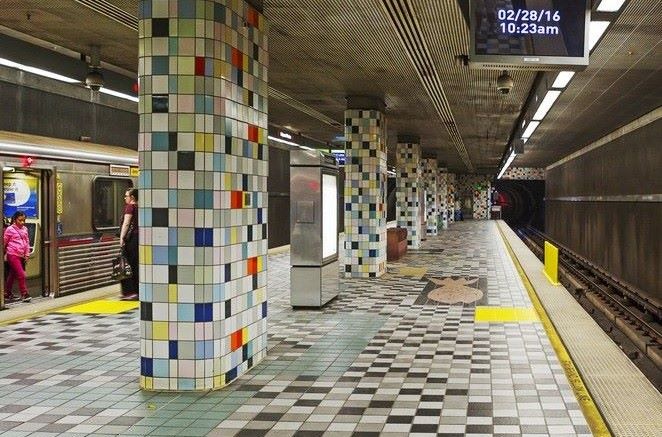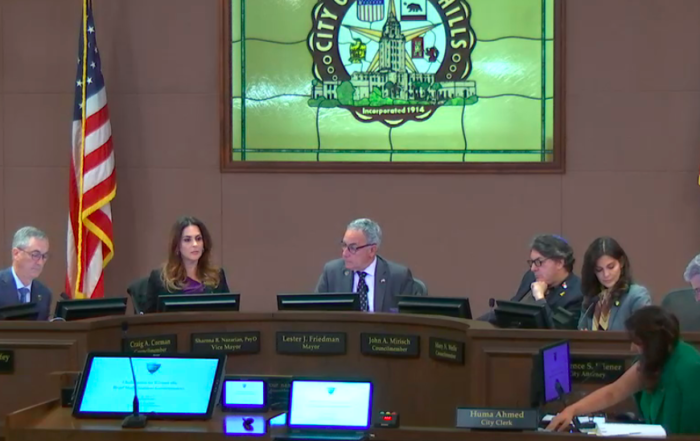GoPass, a pilot program that grants fare-free rides to L.A. county K-14 students, was made permanent by the L.A. Metro Board of Directors late last month. The program, which began in 2021 to help families mitigate the financial harms of COVID-19, received resounding support from the Board, students, and district officials during the April 25 meeting.
A GoPass is a Metro card students from kindergarten to community college can use to ride for free on the Metro and participating transportation agencies within the county. The GoPass has no ride limit and students can use it to travel anywhere, any day of the week. According to Metro, 380,000 students have participated in the program since 2021 resulting in a combined 36 million rides. One hundred and twenty-three school districts in L.A. County have elected to offer GoPass to their students.
Metro Board members and transportation justice groups like Move LA see the program’s measurable impact branching out as GoPass develops. In practical terms, the Metro Board considers the program an investment – today’s students may become lifelong Metro riders. An increase in public transportation use benefits the environment and communities in L.A. which bear the brunt of pollution and dangers accompanying a car-dominated city.
For students and schools, the benefits are obvious. On an individual level, working-class students in participating districts can now afford to travel to school. The financial burden of transportation costs, Board member Fernando Dutra noted during the meeting, affects students in every aspect of their lives. Dutra reported that students have thanked him for the program, saying before GoPass they had to choose between paying a fare or for lunch. Now, they can do both.
Just as GoPass helps ease the cost of daily life for students, the program also boasts long-term results that make it worthwhile. Metro participated in a study that found that students with a free transit pass have up to 27 percent higher graduation rates than students without it. Some districts say lack of transportation is one of the larger contributors to chronic absenteeism. In LAUSD, 45 percent of students were chronically absent in the 2021-2022 school year. In January, LAUSD reported the percentage dropped to 28 percent. The district’s average daily attendance rate (ADA) – a number that dramatically impacts student achievement and district funding – has risen to 93 percent this year, bringing school attendance to pre-pandemic levels.
During public comment, LAUSD student Board member Karen Ramirez called GoPass a “Transformative and invaluable resource” for LAUSD students. “It plays a critical role in the quality of education I receive.” Testimonies from other GoPass supporters emphasized the program has expanded the worlds of L.A. county students. They are free to attend after-school programs, internships, and explore their neighborhoods and cities without anxiety over cost.
But even the program’s supporters worry it has limited scope. Concerned community organizations want to ensure the program operates equitably. While the program is free for students, it’s paid for by Metro L.A. and individual school districts. School districts share the cost of GoPass participation with the transit agency. LAUSD Board member Nick Melvoin estimated that LAUSD pays just over one million dollars to provide fareless rides to students. What may be possible for a large district like LAUSD is much less so for smaller districts regardless of state support.
L.A. County Second District Supervisor Holly J. Mitchell celebrated the Board’s decision, but cautioned that the cost barrier was keeping schools in her district from enrolling. She hoped the Metro’s upcoming report on the program would address the equity discrepancy.
In a presentation, the Board reported “Twenty-seven percent of 81 public school districts in L.A. County are participating in the program, along with 69 percent of charter networks, 39 percent of independent charter schools, and 69 percent of community college districts.” Board member Tim Sandoval noted that only about 33 percent of students in L.A. county participate in the program and a concerted effort needs to be made to expand their reach. Supervisor Hilda Solis suggested engaging with other municipal transit agencies to bring GoPass to low-income communities.
According to the Board, school districts receive state funding to participate in GoPass. Districts can expect 60 percent of their total cost to be covered by the state, lowering the cost per student from seven dollars to less than three dollars. Multiple speakers expressed concern that the districts unable to participate due to cost were the districts that needed the program most acutely.
For the L.A. Community College District (LACCD), GoPass has provided crucial aid to low-income students. LACCD Trustee Sarah Hernandez noted the financial precarity many community college students experience. She called transportation a “civil rights issue.” Other public comments addressed the program’s current inability to fully address the financial strain families are experiencing. One speaker noted that some families are unable to take their children to school on the Metro because the fareless program doesn’t extend to guardians. Speakers encouraged the Board to introduce fareless programs for all riders.
While the Metro prepares to report back on the program this year, supporters of GoPass are cheered by the successes thus far. LAUSD Board member Nick Melvoin, who represents District 4, says schools and students on the Westside continue to reap the rewards of the two-year-old program. All of the schools in District 4 are enrolled in GoPass. Students can contact their schools to receive and activate their cards. District 4 has been actively promoting the program by reaching out to schools and families directly.
“One of the challenges in L.A. more broadly is from the governance structure,” Melvoin told Westside Voice. “Sometimes for parents and students, they don’t realize that there’s a difference” between the various agencies that cover school transportation.” Melvoin plans to continue outreach that educates his constituents on the resources available to them. Melvoin also noted that LAUSD has the second largest transportation agency in L.A. County, and sees an opportunity for harmony between LAUSD and Metro in their shared aim of making public transportation accessible to all.
The goal, Melvoin says, is for every student to have a GoPass in hand.
Photo by User10095428_393 on iStockphoto.com
Stay informed. Sign up for The Westside Voice Newsletter
By clicking submit, you agree to share your email address with Westside Voice. We do not sell or share your information with anyone.








